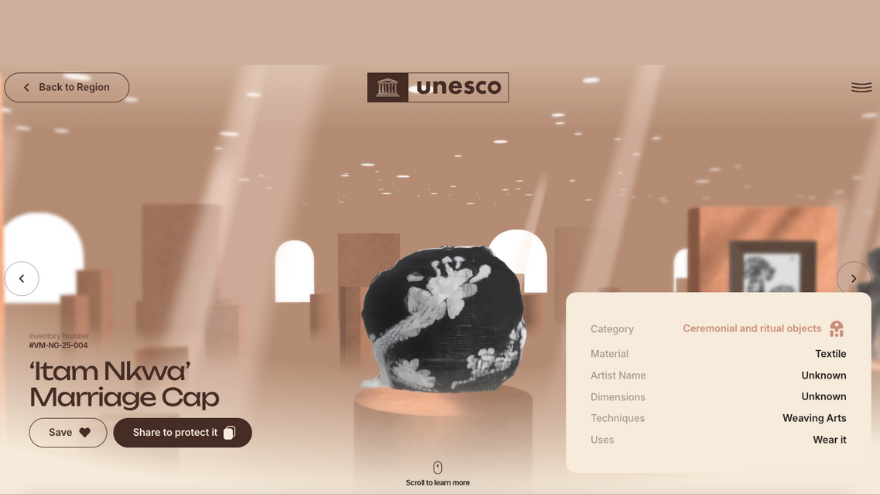At the 2025 MONDIACULT conference in Barcelona, UNESCO launched a first-of-its-kind Virtual Museum of Stolen Cultural Objects. Conceived by Pritzker Prize winning architect Francis Kéré and funded by the Kingdom of Saudi Arabia and run in collaboration with Interpol, the virtual museum is a digital platform dedicated to the urgent issue of illicit trafficking in heritage artefacts.
The museum’s design is inspired by the African baobab tree symbolising deep roots, community resilience and shared heritage. Its virtual structure unfolds like a spiralling ramp, inviting audiences into an immersive space where stolen objects are not only displayed but contextualised through stories from affected communities.
Using 2D and 3D digitization, AI-generated models and VR technology, the museum restores visibility to more than 250 stolen objects from 46 countries, each rendered to convey not just form but cultural meaning. Referencing INTERPOL’s Stolen Works of Art database, the collection evolves as new thefts are recorded and restitution cases reported. “Cultural objects carry the stories of their communities,” the museum’s introduction explains, “When a cultural object is stolen, we lose a part of our identity. Learning about these missing objects is the first step toward their recovery.”
A key design feature is the Return and Restitution Room, where recovered artefacts are celebrated and removed from the virtual collection, symbolically shrinking the museum as justice progresses. This dynamic restorative approach underlines that the museum’s ultimate goal is not accumulation but healing. “While this virtual exhibition won’t make up for the physical lack of these artworks, it will at least restore fundamental access to them and help strengthen advocacy for their return,” UNESCO Director General Audrey Azoulay.
The Virtual Museum is a design-led act of global solidarity. It uses architecture, technology and narrative to reconnect communities with their heritage and to invite the public into a shared movement of justice.









